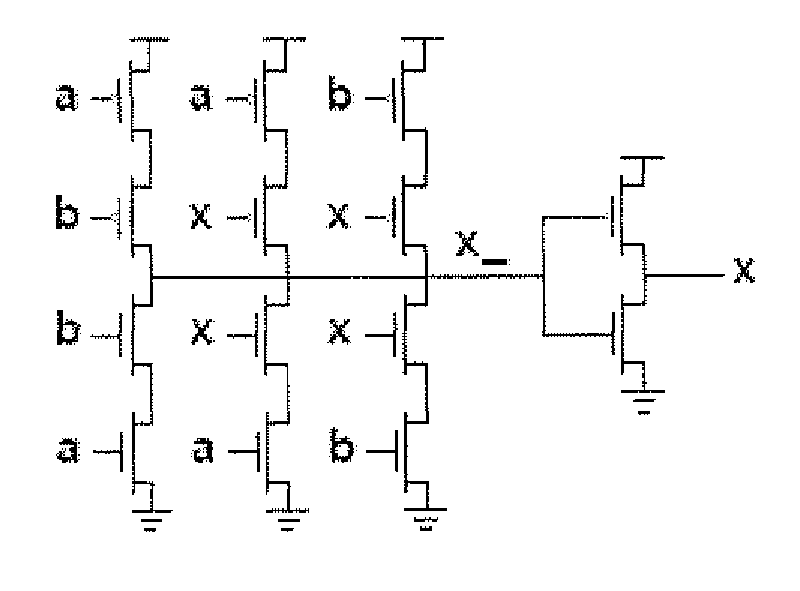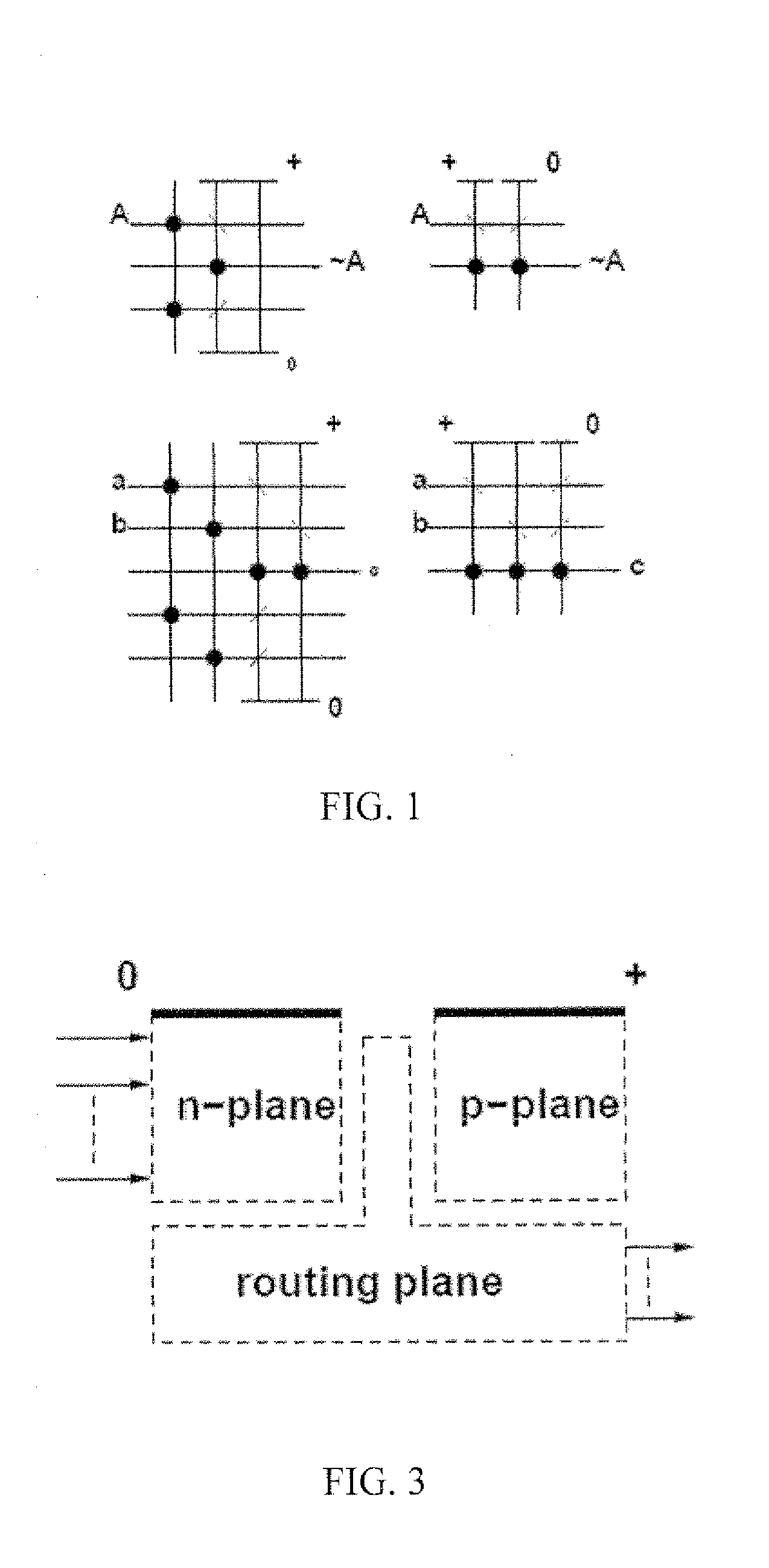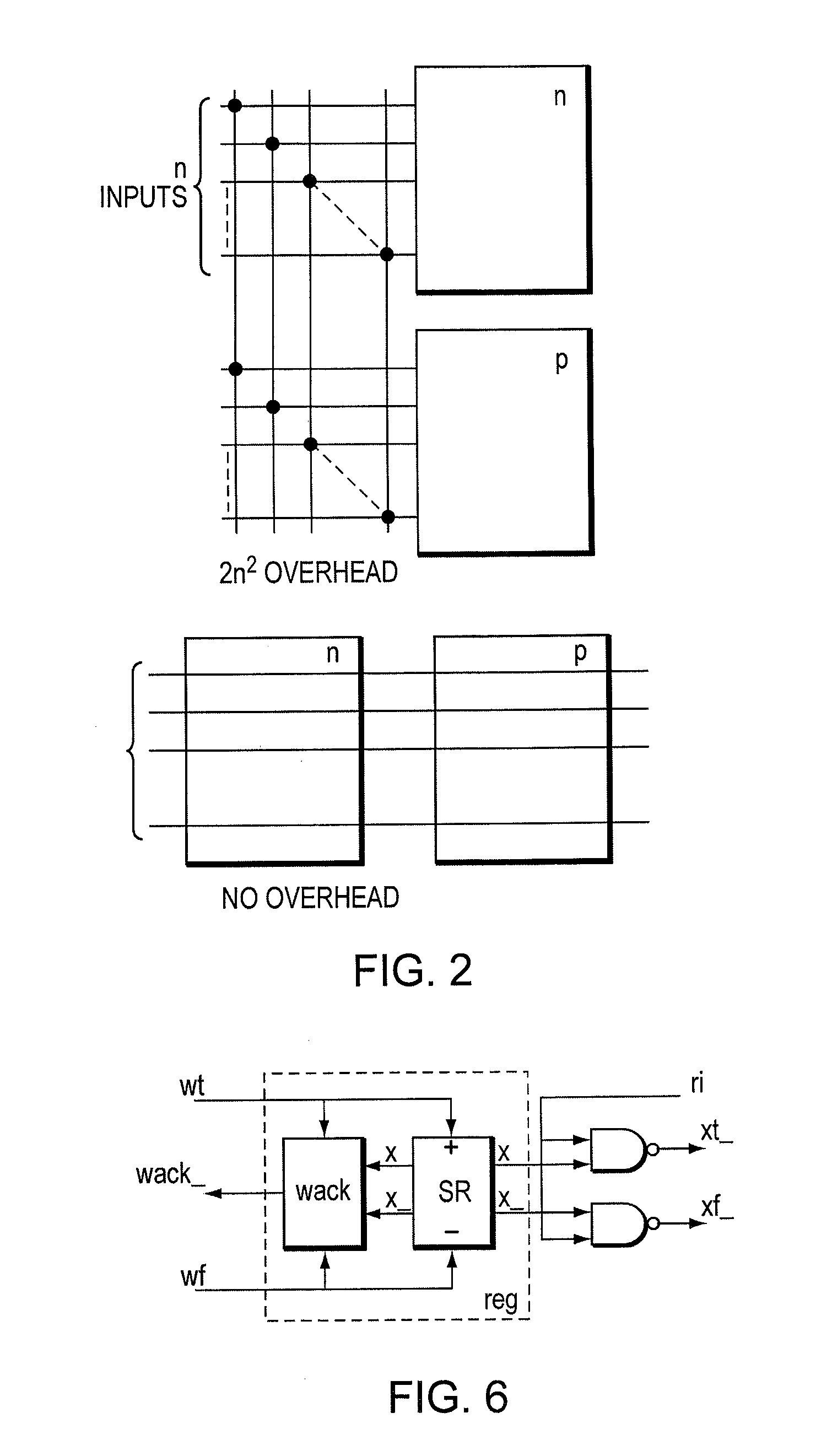Asynchronous nano-electronics
a nano-electronics and asynchronous technology, applied in the field of asynchronous circuits comprising nanotechnology, can solve the problem that synchronous flexible processors cannot be buil
- Summary
- Abstract
- Description
- Claims
- Application Information
AI Technical Summary
Benefits of technology
Problems solved by technology
Method used
Image
Examples
Embodiment Construction
[0029]Currently, molecular nanoelectronics is considered a plausible successor to CMOS. It is a mostly non-lithographic bottom-up fabrication technology based on self-assembly of arrays of silicon nanowires (NW) or carbon nanotubes (CNT), whose main potential advantage at the moment is its density. Great parameter variations and high defect rates should be anticipated for this technology, as should be expected for all nanoscale technologies. Because of the expected variations in specimens, timing should be expected to be difficult to control and predict. Molecular nanowires will be short, precluding the implementation of a global clocking network directly in nanoelectronics. In addition, for extremely high densities of electronic elements, the provision of timing signals consumes a great deal of real estate on a chip. Consequently, asynchronous logic is expected to be an ideal, and probably unavoidable choice, for the design of digital circuits in this technology. We discuss impleme...
PUM
 Login to View More
Login to View More Abstract
Description
Claims
Application Information
 Login to View More
Login to View More - R&D
- Intellectual Property
- Life Sciences
- Materials
- Tech Scout
- Unparalleled Data Quality
- Higher Quality Content
- 60% Fewer Hallucinations
Browse by: Latest US Patents, China's latest patents, Technical Efficacy Thesaurus, Application Domain, Technology Topic, Popular Technical Reports.
© 2025 PatSnap. All rights reserved.Legal|Privacy policy|Modern Slavery Act Transparency Statement|Sitemap|About US| Contact US: help@patsnap.com



